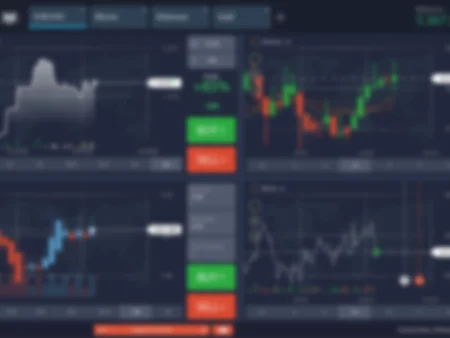Position Trading Strategy: A Comprehensive Guide
In the world of financial markets, there are many different approaches to trading, each designed to suit specific risk appetites, timeframes, and personal preferences. One of the most popular long-term strategies is Position Trading. Unlike day trading or swing trading, position trading involves holding a position in a financial asset—such as stocks, forex, or commodities—for an extended period, ranging from weeks to years. This strategy appeals to traders who prefer a “buy and hold” approach and are not focused on short-term market fluctuations.
In this article, we’ll explore what position trading is, the pros and cons of the strategy, and some useful tips and tricks to help you succeed as a position trader.
What is Position Trading?
Position trading is a long-term trading strategy where traders hold onto assets for an extended period, typically from several months to even years. The goal is to profit from the broader trends in the market rather than small, daily price movements. Position traders aim to capitalize on major price shifts that occur due to macroeconomic factors, corporate performance, industry shifts, or long-term technical trends.
While position traders don’t engage in frequent buying and selling, they spend significant time analyzing market fundamentals and assessing the overall market conditions before entering a position. Because of the long-term horizon, position traders are less concerned with daily market volatility, focusing instead on the big picture.
The Positives of Position Trading
Position trading can be an attractive option for those who don’t have the time or inclination to monitor markets daily, but still want to benefit from market movements over the long term. Here are some key advantages:
1. Less Time-Intensive
One of the biggest advantages of position trading is that it’s significantly less time-consuming than day trading or swing trading. Since trades are held for extended periods, you don’t need to monitor the market on a minute-to-minute or even day-to-day basis. This makes it ideal for people who have other commitments, like a full-time job, or those who prefer a hands-off trading style.
2. Potential for Larger Gains
Position trading aims to capture large price moves that unfold over months or years. By holding onto assets for longer periods, traders can profit from significant market trends, such as bull or bear markets. These longer-term moves can generate higher profits than trying to capture small, short-term gains.
3. Reduced Transaction Costs
Since position traders make fewer trades compared to day or swing traders, the transaction costs, including commissions and spreads, are much lower. This can have a significant positive impact on profitability, especially for traders dealing with higher capital allocations.
4. Lower Emotional Stress
Position trading typically involves fewer decisions, and those decisions are spread over a longer period. As a result, position traders are less exposed to the emotional ups and downs caused by short-term market fluctuations. They avoid the stress of constantly entering and exiting trades, which can lead to better, more objective decision-making.
5. Long-Term Trend Capitalization
Position traders look for long-term trends and often rely on macroeconomic indicators, industry performance, and long-term technical patterns to guide their decisions. This allows them to ride out short-term volatility while capitalizing on broader market movements.
The Negatives of Position Trading
While position trading has many positives, it’s not without its drawbacks. Here are some challenges you should consider before adopting this strategy:
1. Tied-Up Capital
Position trading requires traders to hold positions for long periods, which means capital is tied up in a single asset or a few assets for an extended timeframe. This lack of liquidity could limit your ability to take advantage of other trading opportunities that arise in the short term.
2. Risk of Large Losses
Long-term trends can reverse unexpectedly due to sudden economic, political, or market developments. Since position traders are holding positions for months or even years, they could be exposed to larger drawdowns compared to short-term traders. Effective risk management and stop-loss strategies are crucial to minimize this risk.
3. Missed Short-Term Opportunities
Position traders often ignore short-term price fluctuations and daily market movements, which means they may miss out on smaller but potentially profitable opportunities. For those who prefer a more active and dynamic trading approach, position trading may feel slow and less exciting.
4. Requires Patience and Discipline
Position trading is not for the impatient. Holding onto trades for months or years requires discipline, particularly when markets experience short-term volatility or price corrections. Traders must remain committed to their analysis and not be swayed by temporary market noise, which can be difficult for some individuals.
5. Dependence on Fundamental Analysis
Position trading often involves a strong focus on fundamental analysis. Traders need to evaluate the macroeconomic environment, financial reports, and broader market conditions. This requires a deep understanding of the asset or market being traded, which can be time-consuming and complex for those not familiar with fundamental analysis.
Tips and Tricks for Successful Position Trading
Position trading can be incredibly profitable when done right. Here are some tips and tricks to help you succeed with this long-term strategy:
1. Focus on Fundamental Analysis
While technical analysis can help pinpoint entry and exit points, position traders must place a heavy emphasis on fundamental analysis. Look at the broader economic picture, company earnings reports, interest rates, inflation, and geopolitical factors. These will play a crucial role in shaping long-term market trends.
For instance, if you’re trading stocks, look at earnings reports, industry trends, and a company’s competitive position. For forex trading, consider interest rate differentials, central bank policies, and economic indicators like GDP growth or unemployment rates.
2. Use Technical Analysis for Timing
Even though the primary focus of position trading is on long-term trends, technical analysis can be incredibly useful for identifying optimal entry and exit points. Tools like moving averages, trendlines, and support and resistance levels can help position traders enter the market when momentum is favorable and exit before a major reversal.
The 200-day moving average is a popular tool for long-term traders, as it can indicate whether the asset is in a long-term bullish or bearish trend.
3. Patience is Key
Position trading demands a high level of patience. It’s important not to get distracted by daily or weekly market fluctuations. If you’ve done your homework and believe in the long-term direction of your trade, it’s crucial to stay the course. Overreacting to short-term price movements can lead to prematurely closing profitable trades.
4. Diversify Your Portfolio
One of the main risks of position trading is having capital tied up in just a few trades for a long time. To mitigate this risk, consider diversifying your portfolio by investing in multiple assets or asset classes. For example, you could hold positions in stocks, forex, commodities, and even cryptocurrencies. This way, you reduce the risk of being overexposed to one particular asset or market.
5. Set Realistic Profit Targets and Stop-Losses
While position trading is about capturing big market moves, it’s still essential to set profit targets and stop-loss orders to manage your risk. Stop-losses protect you from major market reversals, while profit targets help lock in gains at key resistance levels or price points. Adjust your stop-losses periodically as your trade moves in the desired direction to protect your profits.
6. Stay Updated on Macro News
Since position traders often rely on broad market trends, staying informed on major economic developments, political changes, and industry shifts is crucial. Events like interest rate hikes, trade wars, or geopolitical conflicts can dramatically affect long-term market trends, and staying informed allows you to adjust your positions accordingly.
7. Consider Using Leverage Cautiously
Position trading can be enhanced by the careful use of leverage, especially in markets like forex or CFDs, where leverage is readily available. However, leverage also amplifies risk. Use leverage cautiously and always account for the potential downside, as long-term positions can face significant drawdowns during volatile periods.
Conclusion
Position trading is a powerful strategy for traders and investors looking to capitalize on long-term market trends and who prefer a more hands-off, patient approach. While it offers the potential for significant profits and requires less day-to-day involvement, position trading also comes with risks such as large drawdowns and the need for deep fundamental analysis.
To succeed in position trading, it’s important to have strong discipline, patience, and a clear understanding of both fundamental and technical analysis. By following the tips and tricks outlined in this article—such as focusing on the big picture, diversifying your portfolio, and using technical analysis for timing—you can navigate the markets with confidence and make the most of your long-term trades.
If you’re looking for a strategy that allows you to take a step back from the daily noise of the markets and profit from the broader trends, position trading might be the perfect approach for you.













